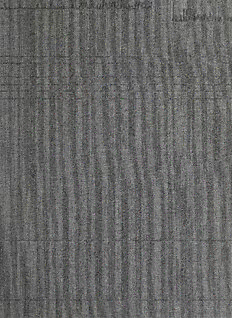
Jahangirnama: Memoirs of Jahangir, Emperor of India PDF
Preview Jahangirnama: Memoirs of Jahangir, Emperor of India
1 II»ItIti 'I’i'1* 111!I ill nwt II' iililiiiiiliiiijrf iiilliiiiiPM *a I I'l^ [I ' jt 4 feil'j}i!lil|}wffilli{{jl{l|? ii jiiiiii iipilpl liglli iIiipi;i®; illiiill ifiiiiiiiiiiiiliiiliiiiiiiiiiiiiiilliii^ iiiiiiiiiiiiiiiM^^ liwil illill ;i;|i; ill iiiiiijiiiiiH^^ liiliiiii li ii iiteijiM I'Ivl'i'l ii i iliiiiiliiliiS I III ill !iilii iiiii nil liilB !!iSi!!i.!!M:l!!,! lii iiliSl'IllIlllPilllllf lllI li!l*ifW' t n!»liiW i I ilii i piI III ii!liillilil 1 111|i,. ill II ill ill !'‘[llI i1'iVi’i' i iiiii III I Mill! iiiiiiiiliilil Illlll iiilfliil 'iliiil ill iiiiiiliiiiiiiiliili »i!ii?iftiiiI iiSlffliiIifi'KiW! @11111 ii iPjiI 1 II k Iiiiii Ii i Ii iiiiiiiiii;!:i''!|i!ii Milillipi!i! S' « iV; i s: H"- I I it "jj*- THE JAHANGIRNAMA Jahangir Embracing Shah Abbas by Abu'l-Hasan. India, Mughal period, ca. 1618. Opaque 1, watercolor and gold on paper. 23.8 X 15.4 cm. Freer Gallery of Art, Smithsonian Institution. Purchase. 45.9 THE JAHANGIRNAMA Memoirs Emperor of Jahangir, of India Translated, edited, and annotated by Wheeler M. Thackston FREER GALLERY OF ART ® ARTHUR M. SACKLER GALLERY S}nithsonian Institution, Washington, D.C. in association witFi OXFORD UNIVERSITY PRESS New York ® Oxford . PJb5 AD ¥4 ¥ 1. OXFORD UNIVERSITY PRESS 99 Oxford NewYork Athens Auckland Bangkok Bogota BuenosAires Calcutta CapeTown Chennai DaresSalaam Delhi Florence FdongKong Istanbul Karachi Kuala Lumpur Madrid Melbourne MexicoCity Mumbai Nairobi Paris Sao Paulo Singapore Taipei Tokyo Toronto Warsaw andassociatedcompanies in Berlin Ibadan Copyright©Smithsonian Institution, 1999 All rights reserved Published in 1999by Oxford University Press, NewYork, in association with the FreerGallery ofArtand theArthurM. SacklerGallery, Smithsonian Institution, Washington, 19.C. Editedby Lynne Shaner I9esigned by Mary Neal Meador Typeset m Weiss WeissTitlingcapitalsby ArthurFdoener Photographycredits, by folio p. 45, photo by PierreAbboud, fol. 143, ©Michael Brand; foL 160, © BruceC.Jones,- fol. 182a, © Philip Pocock, fol. 224b, © R. M. N. Cover: detail, JahangirPreferringaShaykhtoKings, by Bichitir. India, Mughal period, ca. 1615-18. Opaquewatercolorandgoldon paper. FreerGalleryofArt, Smithsonian Institution. Purchase, FI942.I5 Oxford isa registered trademarkofOxford University Press. All rights reserved. No partofthis publication maybereproduced, storedin aretrieval system, ortransmitted, in any form orbyany means, electronic, mechanical, photocopying, recording, orotherwise, withoutthe priorpermission ofOxford University Press. LibraryofCongressCataloging-in-Publication Data Jahangir, EmperorofFJindustan, 1569-1627. [JahangTrnama. English] TheJahangirnama ; memoirsofJahangir, EmperorofIndia/ translated, edited, andannotatedbyWheelerM.Thackston. p. cm. Includesbibliographical references (p. ) and index. ISBN0-19-512718-8 1.Jahangir, Emp—erorofFJindustan—, 1569-1627. 2. Mogul Empire. 3. Mogul Empire Kingsandrulers Biography. I. Thackston, W. M. (WheelerMcIntosh), 1944- . II. Title. DS461.5.J28813 1999 954.02'56'092—dc21 [b] 98-18798 CIP £ 3 Smithsonian FreerGalleryofArtand ArthurM.SacklerGallery 1 3 5 7 9 8 6 4 2 The paperused in this publication meets theminimum requirementsfortheAmerican National Standard for — PermanenceofPaperforPrinted Library Materials, z39.48 984.1 Printed m FJong Kong Contents Foreword Milo CleveLviJ Beach vi Acknowledgments viii Translator's Preface ix Preface to the Jahanginuvna 1 The Jahau^irnama 19 Jahangirnama Chronology 461 Glossary 463 Appendix A: Weights and Measures Used byJahangir 473 Appendix B: Soubas of the Empire and Their Constituent Sarkars, from the Ain-i-Akhari 475 Appendix C: Translations 476 Selected References 480 Index of People and Places 483 V Foreword T — he Jahanginuvna the personal memoirs of Jahangir, fourth Mughal — emperor of India is a work of intensely alert observation and prob- ing intelligence. Jahangirs great-grandfather, Babur, had written the Bahunicvna, the first true autobiography in the Islamic world, which described frankly and with immense insight the political turmoil, actions, and personalities that had brought the Mughals from Central Asia into India. This literary genre was still fresh and provocative when Jahangir chose to follow his predecessors initiative, and the result was a vivid chronicle of a wealthy, artistically sophisticated kingdom at the height of its powers. While theBalnirnama portrays an era of empire building, however, the Jahangirnama depicts a period when political control was relatively stable and time could be devoted to life's pleasures. Of all the Mughal emperors,Jahangir was the most observant of the world around him, and his memoirs leave no doubt about his delight in the unusual landscapes, animals, flowers, and characters he encountered in India. Visual sensations were especially powerful to him, and consequently the descriptions in his text are minutely detailed It is not surprising, therefore, that this emperor was the greatest of all Mughal connoisseurs of the arts. And while his father, Akbar, had consolidated power through extensive public building projects, Jabangir eschewed the monumen- — tality of architecture for more intimate and personally expressive artistic forms man- uscript illustrations, for example, and finely crafted everyday objects (which in his world included jade cups shaped like lotus leaves, textiles woven of gold thread, and rubies inscribed with decorative calligraphy). The illustrations in this volume provide abundant evidence ofJahangir's brilliance as a patron of the arts. There are several references in Jahangir's narrative to artists and to his interest in — their work part of the reason this new translation has been supported by the Freer Gallery of Art and the Arthur M. Sackler Gallery. Early in the seventh regnal year (1612), for example, he describes the return of the courtier Muqarrab Khan from an embassy to Goa. "He had brought several very strange and unusual animals had not 1 seen before. ordered the artists to draw their likenesses in the Jahangiruama so . . . I . . . that the astonishment one has at hearing of them would increase by seeing them." No illustrated copy of the chronicle was in preparation at this time, however,- Jahangir's text was still a personal diary. Such paintings must therefore have been kept in the inventory of the kitahkhana (book workshop) pending the eventual assembly of an official volume, not until the thirteenth regnal year (1618) did Jahangir authorize a court calligrapher to copy the text for presentation to his family and others. The Bahunuvna and the Akbanuwm, the biography of Jahangir's father Akbar, had been illustrated by paintings of past events made late in the rule of Akbar when those texts were written out in official copies. Jahangir's own words, however, indicate that VI
